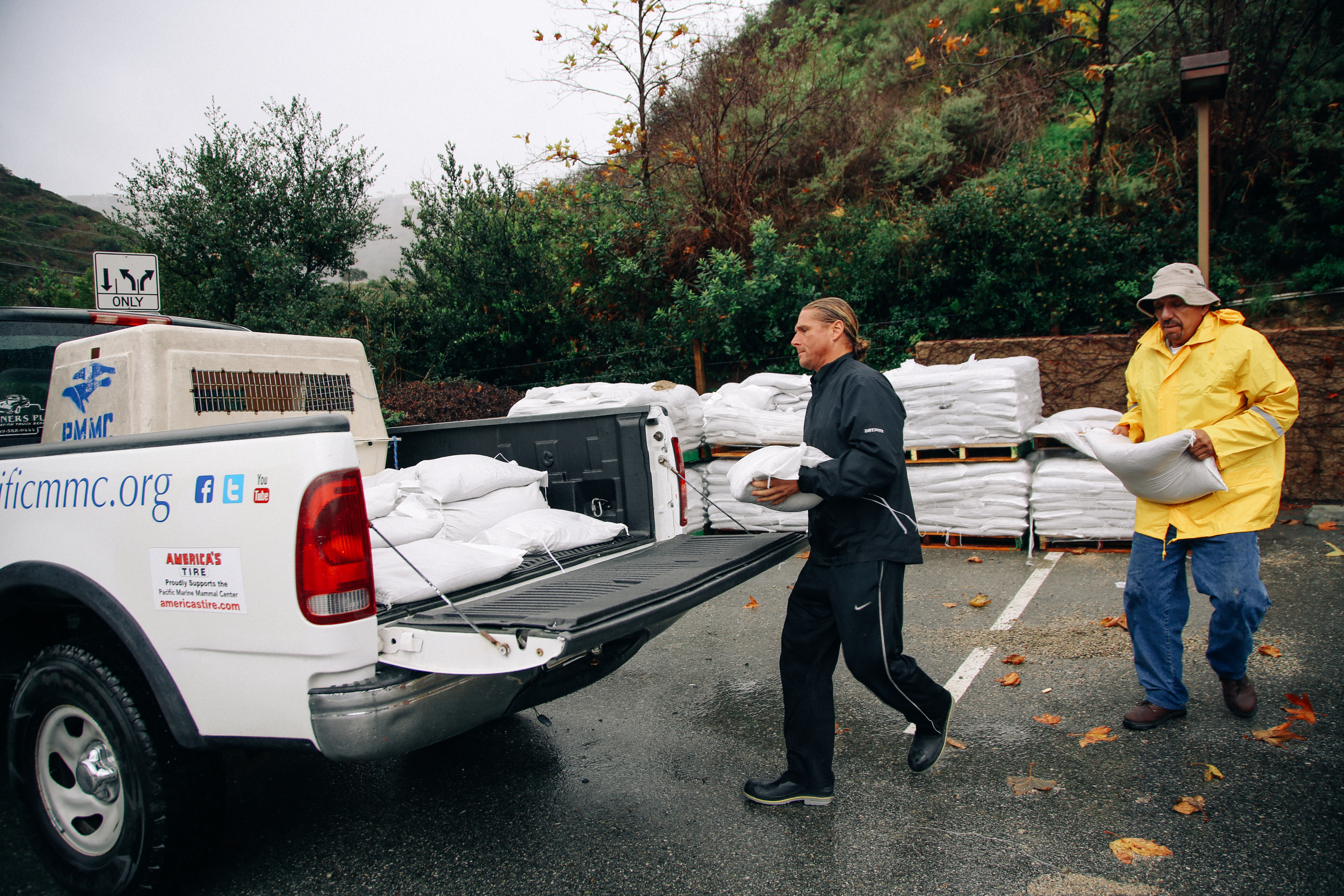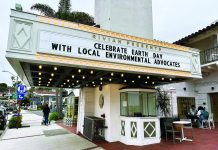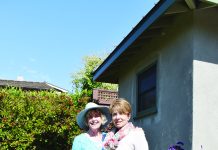As rain swept across Southern California this week, a determined group of volunteers secured temporary overnight shelter for homeless people turned away from the at-capacity, city-run shelter in Laguna Canyon.
Elsewhere in the city, the storm system expected to produce more than two inches of rain caused minimal disruption early in the week. Water pooled on Laguna Canyon Road, but road closures proved unnecessary and city staff deployed to clear debris from catch basins and monitor weather information, city officials said.

St. Mary’s Episcopal Church and Neighborhood Congregational Church were the first to open their doors to the homeless on Tuesday and Wednesday, respectively, though organizers hope to secure commitments during the cold-weather season from other churches as well.
“It’s a joy to be able to provide safe, secure housing in miserable weather,” said Rev. Robert Honeychurch, adding that St. Mary’s agreed to provide a few nights per week of overflow housing in its Guild Hall. “It’s only a stop-gap solution. There needs to be a community conversation about homelessness,” he added.
With gusty winds and showers at nightfall, 11 people who could not be accommodated at the Alternative Sleeping Location in Laguna Canyon accepted transportation to St. Mary’s this past Tuesday, said Dawn Price, executive director of the Friendship Shelter, which operates the city-run shelter. About 60 people in total showed up for dinner at the 45-bed capacity shelter, she said. Typically, there are five to seven people that can’t be accommodated, she said.
Spaces are assigned at the year-round shelter based on a lottery system, with preference given to those with local ties. And during last month’s final weeks when overnight temperatures dropped into the 30s and 40s, the lottery was held earlier in the evening. That allowed homeless people who did not receive a sleeping berth time to board a bus for the Santa Ana Armory, Price said. Shelter staff provided free passes, but Price couldn’t say how many people took advantage of the offer.
The 200-person, county operated armory, open Nov. 30 through mid-April, “is the cold weather program in the city,” said Assistant City Manager Christa Johnson. Though earlier representatives of the local Interfaith Council initiated some discussion with Johnson about establishing an overflow cold-weather shelter, she was unaware of any progress on that front.
“The city is already doing more than any other in the county,” said Johnson, adding that Price secured an agreement with the Congregational Church to serve as a substitute location for the shelter should an emergency evacuation be necessary. In December 2010’s 100-year rainstorm, rising water prohibited emergency vehicles from reaching many flooded areas in Laguna Canyon, including the shelter. “We are thinking about those populations,” she said.
“Since the shelter opened, churches have acted as the overflow when it’s cold or raining,” said Rev. B.J. Beu, of Congregational Church, whose congregants have also supplied a free meal each Monday at the city shelter, which opened in 2009. “We want to have an open heart,” he said.
With the onset of El Nino rains, local Ann Richardson, a representative of the Interfaith Council and a volunteer coordinator, this week solidified commitments from church leaders and rounded up helpers to supply a roof at night for a dozen people. During business hours, the downtown library often serves as a de facto shelter. Volunteers assist Richardson by bringing to the churches mats and blankets, which are stored offsite in a private garage, she said. Private donations underwrite the pay of an overnight security guard, a condition set by church officials, she said.
“People do rise up when it’s raining,” said Richardson, 78.
The intense and destructive overnight storm that caused $10 million in damage to homes and businesses in Laguna Canyon and downtown today yields a silver lining of sorts.
While the city has not pursued the major infrastructure fixes required to increase flood control capacity along Laguna Canyon, some other shortcomings have been addressed. Along the canyon, six surveillance cameras now are positioned along waterways. Twelve rain gauges collect precipitation and six sensors detect soil saturation.
“Today, we are more proactive,” said Jordan Villwock, the city’s emergency coordinator, a job that didn’t exist in 2010. Internal plans and procedures are in place to monitor and react to weather conditions and forecasts, he said. As an example, if soils reach a 50 to 70 percent saturation point, managers will now be called on to decide if a voluntary evacuation should take place in anticipation of a mudslide, he said. On Tuesday, soils were at 4 percent saturation, he said.
Downtown businesses also were alerted by phone this week to be ready with flood gates, which seal off entrances, Assistant City Manager Ben Siegel said.
And businesses and residents swiftly wiped out the city’s supply of more than 4,000 filled sandbags. “They’re going like hotcakes,” Siegel said. Two supply points, in the ACT V parking lot in Laguna Canyon and in the inland parking lot of Aliso Beach, will be restocked, he said.





[…] is acknowledged in the community for being instrumental in helping homeless people find food and shelter. Under his direction, NCC opened its doors as an […]